
Güncel haber ve içerikleri bizimle takip edebilirsiniz.

Kılcal damarlar, özellikle yüz, bacak ve burun çevresinde belirginleşerek estetik kaygılara neden olabilir.
DETAYLAR

Rozasea, özellikle yüz bölgesinde kızarıklık, yanma hissi ve hassasiyet gibi belirtilerle kendini gösteren kronik bir cilt rahatsızlığıdır.
DETAYLAR

Gül hastalığı (rosacea), özellikle yüz bölgesinde kızarıklık, damar genişlemeleri ve zaman zaman sivilce benzeri lezyonlara neden olan kronik bir cilt rahatsızlığıdır. Mersin’de yaşayanlar için uzman bir dermatolog desteği almak, hastalığın kontrol altına alınması açısından büyük önem taşır. Uzm. Dr. Ayşegül Güney, Mersin’de gül hastalığı tedavisinde başarılı sonuçlar elde eden, deneyimli bir dermatologdur.
DETAYLAR

Ciltte belirgin bir kızarıklık, özellikle yanak, burun ve alın bölgesinde yoğunlaşan hassasiyet, pek çok insanın yaşadığı bir problemdir. Kırmızı yüz durumu genetik yatkınlık, cilt hassasiyeti, rozasea (gül hastalığı), alerjik reaksiyonlar veya güneşin zararlı etkileri gibi birçok faktörden kaynaklanabilir.
DETAYLAR

Mersin'de cilt sağlığı ve bakımına özen gösteren birçok kişi, siyah noktalardan kurtulmak için çeşitli yöntemlere başvuruyor.
DETAYLAR

Cilt bakımı, her yaştan birey için son derece önemlidir. Gelişen teknoloji ve güzellik trendlerine rağmen, sağlıklı bir cilt için temel bakım adımlarına sadık kalmak gereklidir.
DETAYLAR
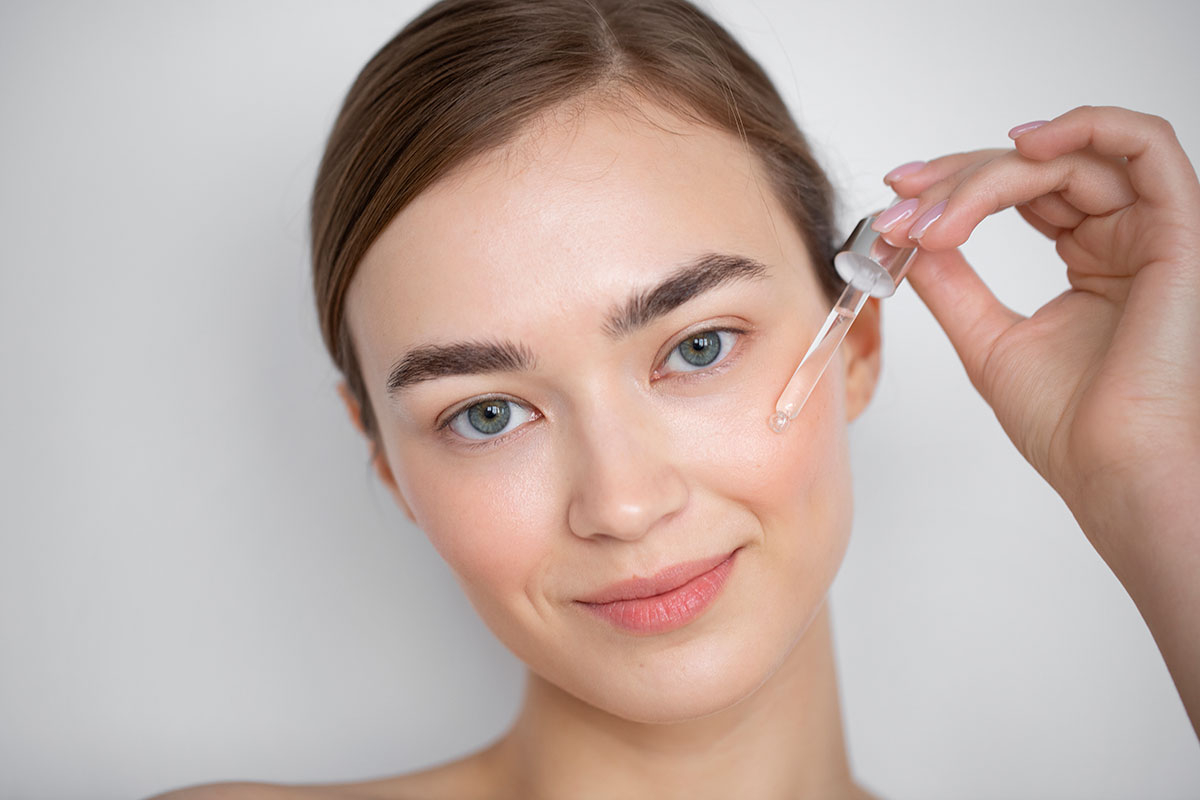
Mersin'de estetik alanında en çok tercih edilen tedavi yöntemlerinden biri olan sıvı yüz germe, cerrahi müdahale gerektirmeden cildin daha genç ve sağlıklı görünmesini sağlamak amacıyla uygulanmaktadır.
DETAYLAR

Cilt bakımı ve estetik alanında son yıllarda popülerleşen biyostimülan dolgular, özellikle yaşlanma karşıtı etkileriyle dikkat çekiyor.
DETAYLAR

Diş sağlığı ve estetiği, günümüzde önemli bir konu haline gelmiştir. Özellikle estetik diş dolguları, diş tedavisi almak isteyen bireyler için büyük bir öneme sahiptir.
DETAYLAR

Günümüzde estetik alanında en popüler uygulamalardan biri haline gelen hyaluronik asit dolguları, yüz hatlarını belirginleştirmek, yaşlanma belirtilerini azaltmak ve ciltteki hacim kaybını gidermek amacıyla yaygın olarak tercih ediliyor.
DETAYLAR

Günümüz estetik dünyasında, yüz hatları ve çene yapısı, kişinin genel görüntüsünü ve özgüvenini doğrudan etkileyen önemli faktörlerden biridir.
DETAYLAR

Burun, yüz estetiğini en çok etkileyen bölgelerden biridir. Genetik faktörler veya yaşlanma gibi etkenler, burun şeklinin bozulmasına neden olabilir.
DETAYLAR
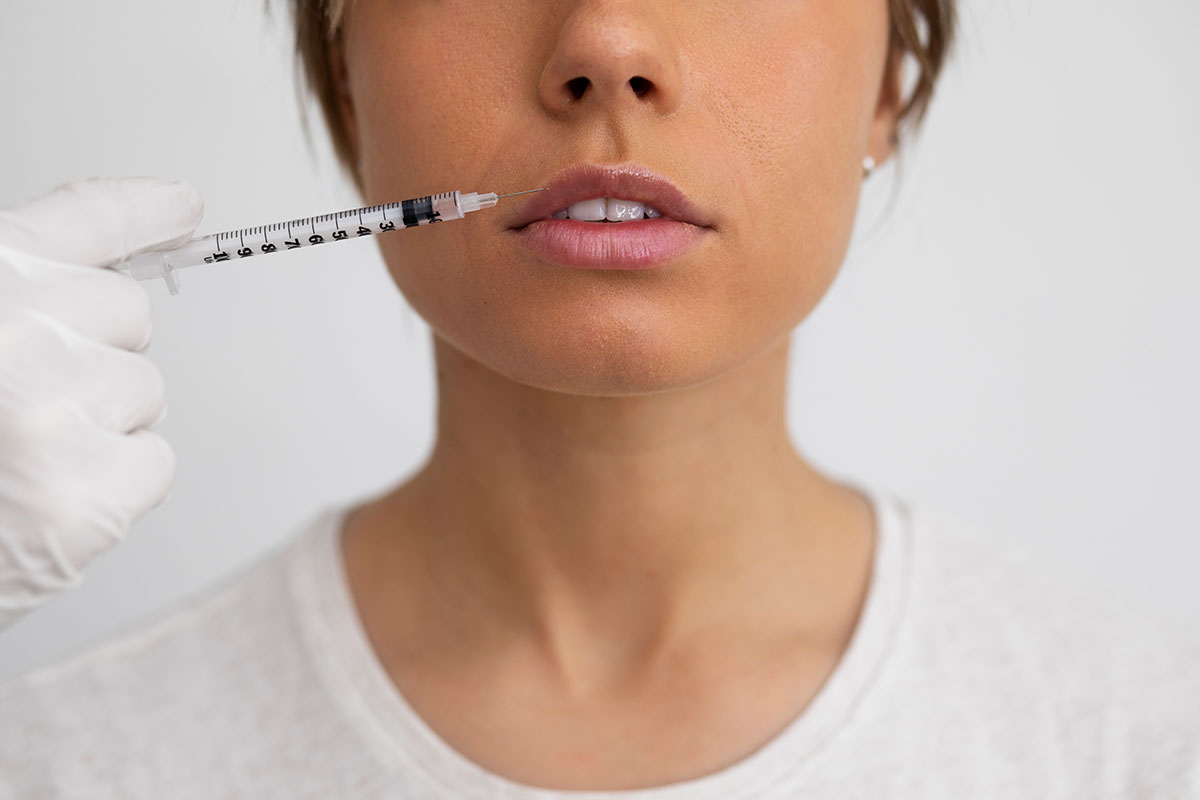
Dudak dolgusu, estetik alanında son yıllarda popülerliği artan bir uygulamadır. Hem kadınlar hem de erkekler tarafından sıklıkla tercih edilen bu işlem, doğal ve dolgun dudaklara sahip olmayı mümkün kılar.
DETAYLAR
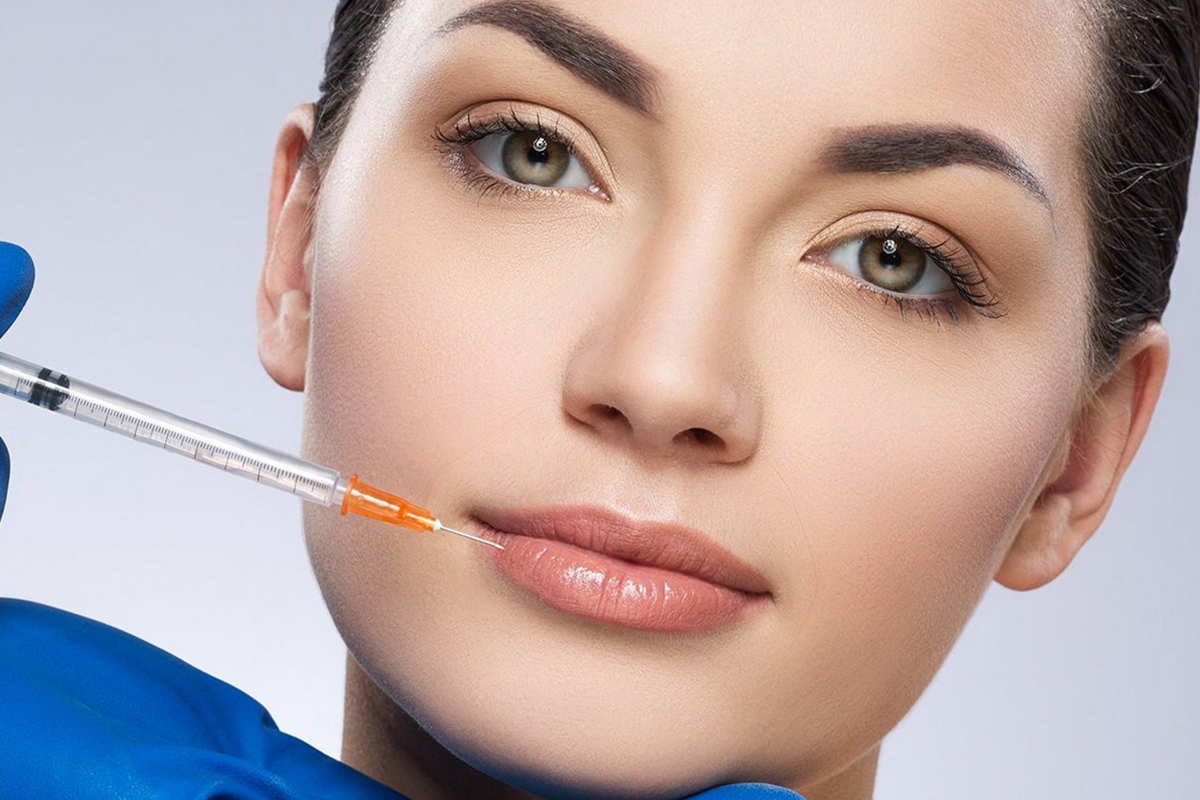
Estetik alanında teknolojinin hızla ilerlemesi, yüz bölgesinde doğal ve uzun ömürlü dolgu uygulamaları yapma imkanı sunuyor.
DETAYLAR

PRP (Platelet-Rich Plasma), son yıllarda estetik tedavi dünyasında sıkça tercih edilen bir yöntem haline gelmiştir.
DETAYLAR
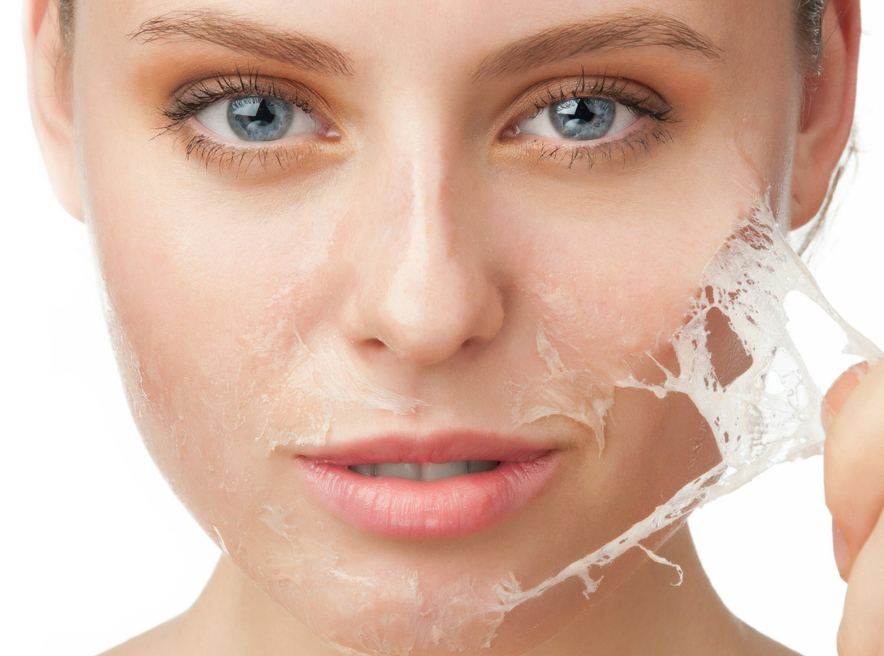
Kimyasal peeling, cilt bakımı alanında estetik sonuçlar sağlayan etkili bir yöntemdir.
DETAYLAR

Cildimiz, vücudumuzun en büyük organıdır ve sağlıklı, genç ve pürüzsüz görünümünü korumak için özel bir bakım gerektirir.
DETAYLAR

Lazer epilasyon, son yıllarda güzellik ve estetik alanında popüler bir yöntem haline gelmiştir.
DETAYLAR

Tüy sarartma, estetik bir çözüm arayanlar için popüler bir yöntemdir.
DETAYLAR

Mersin'de güzellik ve estetik uygulamaları denildiğinde akla gelen isimlerden biri olan Uzm. Dr. Ayşegül Güney, ileri teknolojiye sahip karbon peeling uygulamalarıyla cilt sorunlarına etkili çözümler sunuyor.
DETAYLAR

Günümüzde cilt bakımı ve estetik uygulamaları, insanların kendilerini daha iyi hissetmeleri ve görünüşlerini iyileştirmeleri için büyük bir öneme sahiptir.
DETAYLAR

Güzellik ve gençlik, çağlar boyunca insanlığın arzusunu ifade etmiştir.
DETAYLAR

Günümüzde estetik alanında gelişen teknolojiler ve yenilikler, cilt gençleştirme yöntemlerini de beraberinde getiriyor.
DETAYLAR

Biolifting, son yıllarda estetik dünyasında en çok tercih edilen cilt yenileme yöntemlerinden biridir.
DETAYLAR

Sağlığı ve güzellik her zaman ön planda olmuştur, ancak son yıllarda bu konudaki popülerlik hızla artmaktadır.
DETAYLAR
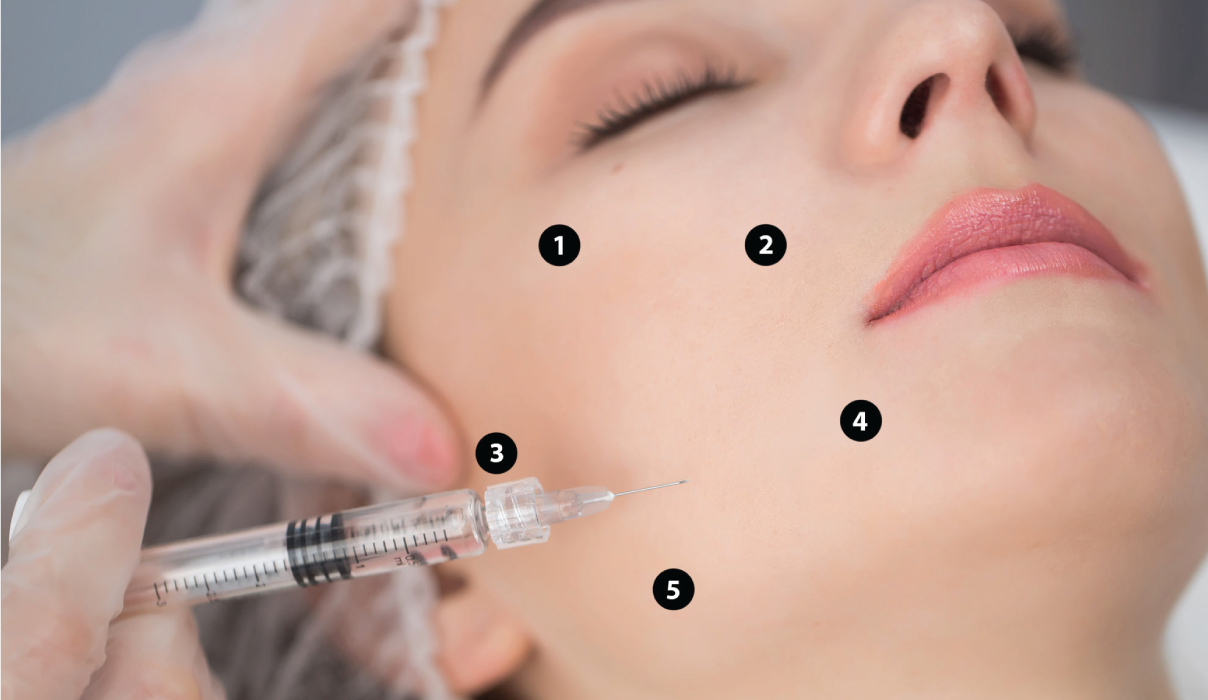
Cilt gençleştirme uygulamaları, zamanın etkilerini hafifletmek ve genç bir cilt görünümü elde etmek isteyenler için ideal çözümler sunar.
DETAYLAR

Cilt gençleştirme ve güzellik, estetik dünyasında sürekli olarak gelişen bir alandır.
DETAYLAR

Günümüzde estetik ve dermatolojik uygulamalar, sağlıklı ve genç bir cilt elde etmenin en etkili yollarından biri olarak karşımıza çıkıyor.
DETAYLAR

Yaşlanma belirtileri, günümüzün hızlı yaşam temposunda hemen hemen herkesin karşılaştığı bir durumdur.
DETAYLAR

Dolgular, hem estetik hem de sağlık alanında fark yaratmak isteyen bireyler için çözüm sunan etkili uygulamalardır.
DETAYLAR
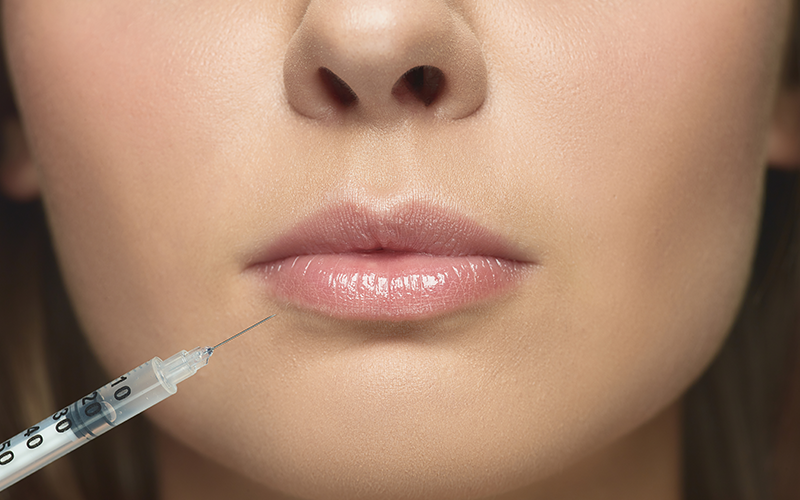
Güzellik ve estetik alanında dudak dolgusu son yıllarda öne çıkan uygulamalar arasında yer alıyor.
DETAYLAR

Burun estetiği, yüz güzelliğinde ve yüz hatları arasındaki dengeyi yakalamada kritik bir rol oynar.
DETAYLAR

Göz altı morlukları, çukurluklar ve yorgun görünüm, birçok insanı rahatsız eden yaygın sorunlardandır.
DETAYLAR

Günümüzde estetik işlemler, bireylerin kendilerini daha iyi hissetmeleri ve özgüvenlerini artırmaları için önemli bir rol oynuyor.
DETAYLAR
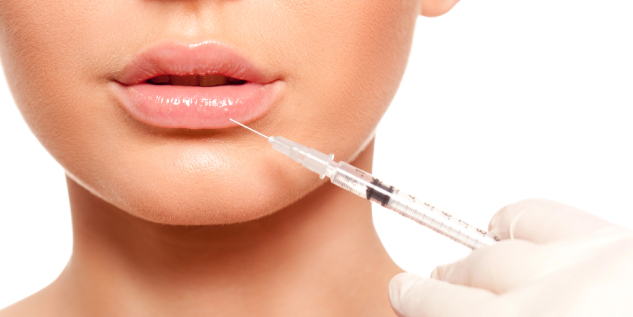
Dudaklar, yüz güzelliğinin en önemli unsurlarından biridir ve dolgun, çekici dudaklar birçok kişi için arzu edilen bir özelliktir. Günümüzde estetik dermatoloji, dudak dolgusu uygulamaları ile doğal görünümlü, dolgun ve çekici dudaklara ulaşmayı mümkün kılmaktadır.
DETAYLAR

Yaşlanma, doğal bir süreçtir ancak modern dermatoloji sayesinde bu sürecin etkilerini yavaşlatmak mümkündür. Estetik dermatoloji alanındaki yenilikler, yaşlanma belirtileriyle mücadelede birçok seçenek sunmaktadır.
DETAYLAR

Yaş almak, hayatın kaçınılmaz bir parçası olsa da, teknolojinin ve tıbbın geldiği son nokta sayesinde cildimizin yaşlanma sürecini yavaşlatmak ve hatta geri çevirmek artık mümkün.
DETAYLAR

Kronik baş ağrısı kişinin yaşam kalitesini düşüren bir durumdur.
DETAYLAR

Tıp alanındaki gelişmelerin artmasıyla birlikte sağlık ve güzellik için yapılan uygulamaların sayısı tüm dünyada giderek artmıştır.
DETAYLAR

Botoks ve dolgu medikal estetik uygulamaların arasında en çok tercih edilen iki işlemdir.
DETAYLAR

Botoks, hem kadınların hem de erkeklerin kırışıklıkların oluşmasını engellemek veya kırışıkları gidermek için uyguladığı en etkili yöntemlerden biridir.
DETAYLAR

Botoks, genellikle yüzdeki kırışıklıkları gidermek veya kırışıklık oluşumunu engellemek için mimik kaslarını zayıflatan bir ilaçtır.
DETAYLAR

Botoks, genellikle yüzdeki kırışıklıkları gidermek için Clostridium botulinum adlı bakteriden elde edilen bir toksindir.
DETAYLAR

Botoks, sinir uçlarından salgılanarak mimik kaslarının gevşemesini sağlar. Ancak botoksun bu etkisi geçicidir.
DETAYLAR

Kırışıklıkların oluşmasını ve kırışıklıkları gidermek için en etkili yöntem olan botoksun insan sağlığına hiçbir zararı yoktur.
DETAYLAR

Tüm dünyada ameliyatsız estetik işlemlerde 1. sırada yer alan botoks, oldukça popüler bir uygulamadır.
DETAYLAR

Masseter botoks (çene botoksu), çene kasının yan tarafında bulunan en güçlü çiğneme kasına uygulanmaktadır.
DETAYLAR

Botoks ile el terleme tedavisi uzun zamandır kullanılan güvenli, etkili ve pratik bir yöntemdir.
DETAYLAR

Botoks ile kaş kaldırma işlemi, düşük kaşların yukarıya kaldırılmasında son derece pratik ve başarılı bir işlemdir.
DETAYLAR

Paris ışıltısı, anti-aging yani yaşlanma karşıtı tedavisi için uygulanan ve yüze canlandırılmış ve iyi bir cilde sahip olmak için uygulanan ameliyatsız enjeksiyon yöntemlerinden biridir.
DETAYLAR

Matriks Aşısı Sık Sorulan Sorular
DETAYLAR

Nucleofill DNA ışıltısı, doğal polünükleotitler içeren yeni jenerasyon mezoterapi uygulamasıdır.
DETAYLAR

Anında göz alıcı ve güzel bir cilt, anında doğallıkla ışıldayan bir cilt
DETAYLAR

İNNEA AQUA özel içeriği ile cilt sıkılaştırma ve yenilemede kullanılan bir üründür.
DETAYLAR

Yaşımızın ilerlemesi ve çevresel faktörler gibi bir çok nedene bağlı olarak cildimizde oluşturduğu mat bir görünüm ortaya çıkar.
DETAYLAR

Jalupro® İsviçre merkezli biyoteknoloji şirketi Professional Dera’ nın 2006 yılından beri tüm dünyaya pazarladığı Sağlık Bakanlığı onaylı bir cilt gençleştirme ürünüdür.
DETAYLAR

Akne (sivilce) tedavisinde yer alan ve akne gelişimine neden olan mekanizmalar üzerinde en etkili ilaç olan Isotretinoin; retinoid grubunda yer alan bir A vitamin türevidir.
DETAYLAR

Saç dökülmesi, genetik, stres, mevsimsel geçişler ve çeşitli hastalıklar nedeniyle meydana gelebilmektedir.
DETAYLAR

Teknolojinin gelişmesi ile karşımıza çıkan BBL geniş bantlı ışık terapisi yöntemi tüm yaşlanma belirtilerinin önüne geçerek, her yaşta genç bir cilde sahip olmamızı sağlıyor.
DETAYLAR

Halk dilinde cildiye olarak bilinen dermatoloji uzmanı tüm cilt hastalıklarının tanı ve tedavisine yönelik hizmetler verir.
DETAYLAR

Genellikle yaşlılık belirtileri cilt üzerinde fark edilir. Düzensiz beslenme, sigara ve alkol gibi zararlı alışkanlıklar, uykusuzluk, uzun süre güneş ışınlarına maruz kalmak cildin yaşlanmasını hızlandıran etkenlerdir.
DETAYLAR

Cilt katmanları yaş alımı ile birlikte gevşeyerek yer çekiminin de etkisi ile aşağıya doğru sarkar.
DETAYLAR

Kişilerin yaşamış olduğu travmalar, ameliyatlar, geçirilen kazalar sonrasında oluşan yaralanma, yanıklar, bazı deri enfeksiyonları ve kesikler vücutta skar adı verilen yara izi oluşumuna neden olmaktadır.
DETAYLAR

Mersin’de Karbon Peeling Uygulaması hakkında Dermatolog Ayşegül Güney detaylı bilgi verdi.
DETAYLAR

Cildimiz vücudumuzun en büyük organıdır. Aynı zamanda iç ve dış faktörlere bağlı olarak yıpranmaya maruz kalan organımızdır.
DETAYLAR

Mersin’de Lazer epilasyon, istenmeyen tüylerden cildinize herhangi bir zarar verilmeden kalıcı bir şekilde kurtulmanızı sağlayan yöntemdir.
DETAYLAR

Tırnak mantarı; el veya ayak tırnaklarının mantar mik- robu ile ortaya çıkan bir enfeksiyonudur. El veya ayak tırnaklarında kalınlaşma, renk ve şekil değişikliği ve kırılmaya neden olur.
DETAYLAR

Botulinum toksini enjeksiyonu, başta alın kırışıklıkları, glabella, periorbital ve perioral çizgilenmeler olmak üzere yüz ve boyun kasları gibi daha birçok kırışıklık ve çizgilenmeyi geçici bir süre ile yok etmede kullanılan, nöromüsküler kavşakta presinaptik nöronlardan asetilkolin salınımını bloke ederek geçici kas paralizisine yol açan, etkisi doza bağımlı ve geri dönüşümlü kozmetik bir uygulamadır.
DETAYLAR

Dermatolog Doktor Ayşegül Güney Aşırı Terleme Problemi Olan Hastalar İçin Terleme Botoksu Hakkında Bilgi Verdi.
DETAYLAR

Mersin Dermatoloji Kliniği Uzman Dr.Ayşegül Güney halk arasında sivilce olarak da bilinen Akne ve Mersin’de Akne Tedavisi hakkında bilgi verdi.
DETAYLAR

Botoks, botulinum adı verilen bakteri toksini’nden elde edilen bir ilaçtır. Bu ilaç kasları gevşetmek amacı ile kullanılmaktadır.
DETAYLAR

Günümüzde sık görülen cilt hastalıklarından biri de sedef hastalığıdır. Özellikle sonbahar ve kış aylarında artış gösteren Sedef hastalığı; cilt hücrelerinin normalden bir kaç kat daha hızlı bir şekilde çoğalması ile oluşan bir cilt hastalığıdır.
DETAYLAR

Havaların soğuyup kış mevsiminin gelmesinden derimiz de olumsuz etkilenir. Soğuyan hava ile birlikte derimiz vücut ısısının azalmaması için kan dolaşımını azaltır, ter ve yaz bezleri daha yavaş çalışmaya başlar.
DETAYLAR
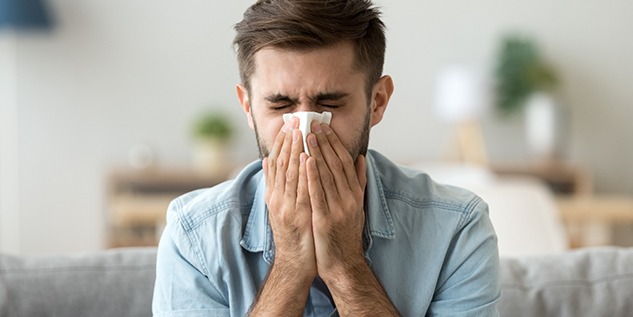
Sonbahar mevsimi ile birlikte yapraklar düşmeye, sıcak hava da yerini yağmurlu ve daha soğuk hava şartlarına bırakmaya başladı.
DETAYLAR

Kış mevsimine yaklaştığımız bu sonbahar günlerinde mevsim değişikliklerinden en çok etkilenen organımız cildimizdir.
DETAYLAR

Yüzde en çok görülen cilt sorunlarından biri de siyah noktalardır. Kontrol altına alınmadığında başka cilt problemlerine neden olabilen siyah noktalar, rahatsız edici görüntüsünden dolayı da kişilerde özgüven kaybına neden olabiliyor.
DETAYLAR
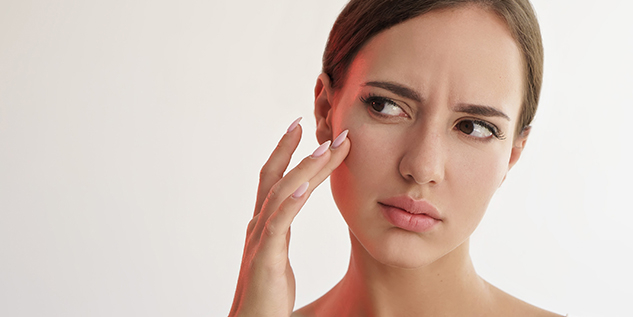
Günümüzde yoğun iş ve şehir hayatı nedeni ile stres de hayatın bir parçası haline geldi. Uykuları kaçıran, yoğun kaygıya neden olan stresten en çok etkilenen organlarımızdan biri de cildimiz.
DETAYLAR

Vücudumuzun en büyük organı cildimizdir. Çevresel faktörlerden beslenmemize, yaşam biçiminden yaşlanmaya kadar çok sayıda etken cilt sağlığını etkiler.
DETAYLAR

Kurak geçen yaz mevsiminden en çok etkilenen organlarımızdan biri de hiç şüphesiz cildimiz. Kavurucu sıcaklarda kuruyan cildimiz kurumuş topraklar gibi çatlaklı, pullu, kızarık, kaşıntılı bir hal alabilir.
DETAYLAR

Cildin güneş ışınlarına yoğun bir şekilde maruz kalması sonucu ciltte oluşan kızarıklık, yanma, su toplama gibi belirtiler gösteren cilt hasarına güneş yanığı denilmektedir.
DETAYLAR

Kurban kesimi için sayılı günler kalmışken vatandaşlar kurbanlarını pazarlardan büyük oranda aldı. Bu süreçte dikkat edilmemesi durumunda hayvanlardan bulaşan viral bir deri hastalığı ile karşılaşabilirler.
DETAYLAR
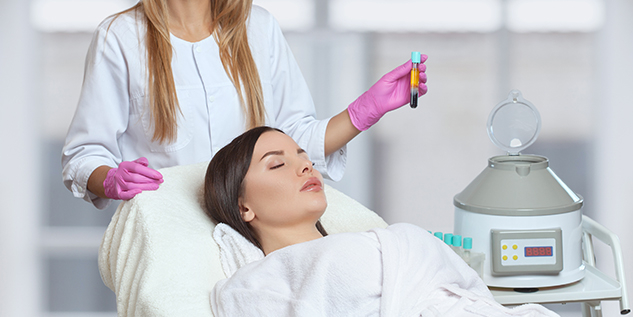
Platelet Rich Plasma (trombositlerden zenginleştirilmiş plazma) yani kısaca PRP, uygulamaya verilen isimdir.
DETAYLAR

Fraksiyonel radyofrekans, ‘’Altın İğne’’ olarak da bilinen deri gençleştirme yöntemidir Altın iğneler mikro seviyede derinizin altında radyo frekans enerjileri uygulayarak daha sıkı ve genç bir cilde sahip olmanızı sağlar.
DETAYLAR

Günümüzde genç bir görünümü sürdürmek veya yeniden kazanmak pek çok insan için önemli bir durum haline gelmiştir. Oluşmuş deri yaşlanma belirtileri ile mücadelede ise günümüzde pek çok tedavi yaklaşımı bulunmaktadır.
DETAYLAR

Genetik olarak her yaş grubunda oluşabilen et benleri özellikle otuzlu yaşlarla beraber kadın erkek her iki cinste de oluşabilir ve yıllar geçtikçe giderek sayılarını artırır.
DETAYLAR

Psoriasis, Yunanca kaşınmak anlamına gelir. Psoriasis kalıcı bir hastalıktır. Sedef hastalığında kırmızı ve üzerinde sedefimsi beyaz pullar bulunan yaralar, özellikle kafa derisi, diz ve dirseklerde ortaya çıkar.
DETAYLAR

Nasır, yaygın görülen, herkesin zaman zaman yaşadığı bir sorundur. Nasır, sürtünme ya da basınç nedeniyle derinin boynuzsu tabakasından oluşan bir oluşumdur.
DETAYLAR
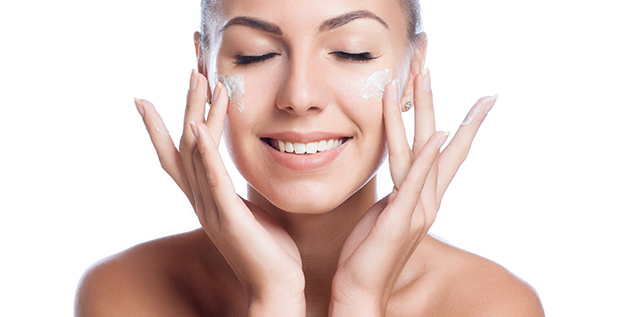
Yüz, boyun, sırt ve gövdede yer alan, yağ bezlerinin aşırı çalışması ve deride bulunan bazı mikropların üremesi sonucu oluşan, ciltten kabarık olarak görülen, zaman zaman içi iltihaplı olabilen sivilcelerdir.
DETAYLAR
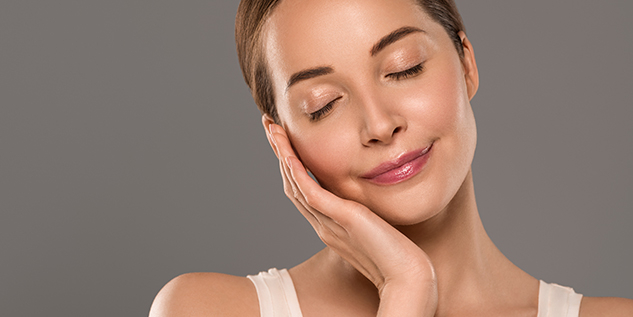
Benler genellikle derinin zararsız değişikliklerindendir. Tıp dilinde melanositik nevüs olarak bilinirler ve melanosit denen pigment hücrelerin (derinin rengini veren hücreler) çoğalması sonucu gelişirler.
DETAYLAR

Dermoskopi (derinin yüzeysel mikroskobik incelemesi) başlıca derideki koyu renkli lekelere tanı koymak amacıyla kullanılan bir dermatolojik muayene yöntemidir.
DETAYLAR

Bazı deri alerjilerinin tespit edilmesi için kullanılan bir alerji testidir. Deriye temas eden maddelerden hangisinin alerji yaptığının ayırt edilmesini sağlar.
DETAYLAR

Mikro iğneleme uygulamaları(dermaroller,dermapenvs) genel olarak cildi yenileme uygulamaları olarak da adlandırılabilir.
DETAYLAR

Selülit; deride çukurluklar ve portakal kabuğu görünümü ile seyreden, deri ve yağ dokusundaki düzensiz çukurlaşma ve kabarıklık görünümünü tanımlayan bir kavramdır.
DETAYLAR

Sağlıklı tırnaklar hep daha çekicidir. Onlar kişinin, alışkanlıklarını ve sağlığını iyi veya kötü yansıtırlar.
DETAYLAR

Tırnak batması tüm yaş gruplarında yaygın olarak görülen bir halk sağlığı sorunudur. Tırnak batmaları uygun şekilde tedavi edilmediğinde kalıcı tırnak bozuklukları oluşturabilir.
DETAYLAR

Dolgu maddelerinin deri altına enjekte edilmesi ile yapılan dolgu estetiği, derideki ince ve derin kırışıklıkları gidermek, yara izlerini tedavi etmek, ciltteki çukurları yok etmek, ince dudakları kalınlaştırmak, yanaklara dolgunluk vermek amacıyla yapılmaktadır.
DETAYLAR

Tedavide Nd:yag lazer cihazı kullanılmaktadır. Kılcal damar tedavi aşamasında lazer ile verilen enerji damardaki kanı ısıtır ve damar duvarı tahrip olur.
DETAYLAR

Saçın sosyal ve psikolojik önemi biyolojik öneminden çoktur. Cinsiyet, yaş, statü, değerler ve grup üyeliği gibi pek çok farklı sosyal özelliği işaret edebilir.
DETAYLAR

Tırnaklar derimizin uzantısı olarak genel sağlığımızı yansıttığı gibi sağlıklı görünümü kozmetik açıdan da önem arz eder. Tırnakların kozmetik görüntüleri dışında önemli fonksiyonları da vardır.
DETAYLAR

Behçet hastalığı (BH), ilk kez 1937 yılında Ord. Prof. Dr. Hulusi Behçet tarafından, tekrarlayan oral aft, genital ülser ve hipopyonlu iridosiklit üçlü kompleksi olarak tanımlanmıştır.
DETAYLAR

Mersin' de Dermatoloji Uzmanı olarak kendi kliniğimde hizmet vermekteyim.
DETAYLAR

Melasma; deride güneş gören bölgelerde sonradan ortaya çıkan, kahverengi lekeler şeklinde kendini gösteren bir cilt hastalığıdır. Gebelikle oluşana kloasma adı verilir.
DETAYLAR

İster iyi huylu, ister kötü huylu olsun deride yerleşen herhangi bir tümörün cerrahi tedavisi denildiğinde akla ilk gelen yöntem eksizyondur.
DETAYLAR

Dünyada her iki kişiden biri göz altı morluk ve halkalanma problemi yaşamaktadır. Göz çevresinin derisi diğer deri alanlarına göre ince yapıdadır.
DETAYLAR

Genital bölgede görülen ve insan papilloma virusa (HPV) bağlı olarak ortaya çıkan cinsel yolla bulaşan bir enfeksiyondur.
DETAYLAR

Tinea Pedis (ayak mantarı); ayakların Dermatofit denilen mantarlarla oluşan yüzeyel enfeksiyonudur. Genellikle ergenlik sonrasında, sıklıkla erkeklerde rastlanan bir hastalıktır.
DETAYLAR

Hemen hemen her insanın vücudunda bulunan bazı benlerde zamanla değişiklikler olabilir. Bu değişikliklerin bir kısmı iyi huylu değişiklikler olup bir kısmı da kanserleşme yönünde değişimlerdir.
DETAYLAR

Ergenlik döneminde hormonların etkisi ile yağ salgısı artar. Yağlanan cildin gözeneklerinin tıkanması daha kolaydır. Bu nedenle siyah nokta oluşumu ergenlerde sıklıkla görülür.
DETAYLAR
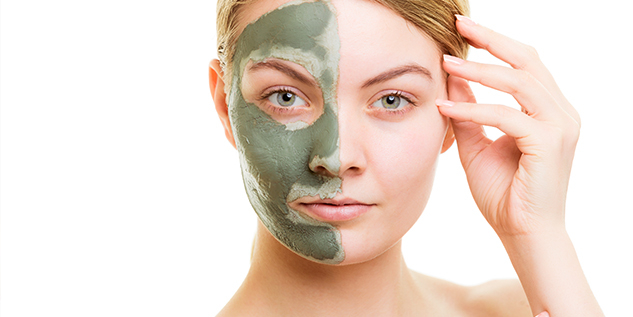
Green Peel yüzde ve vücutta çeşitli cilt problemlerine çözümler getirmektedir.
DETAYLAR
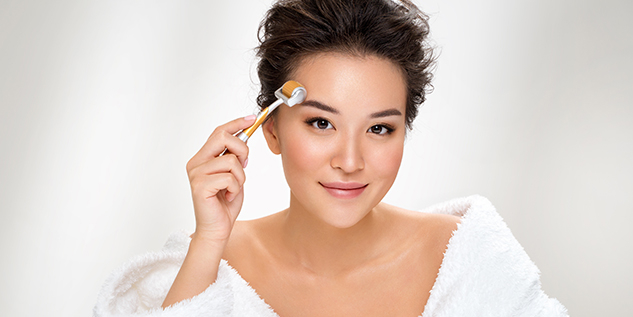
üz mezoterapisinde cildin ihtiyacı olan besleyici maddeler, vitamin ve mineraller cilde enjekte edilir.
DETAYLAR

Kriyoterapi, dermatolojide birçok deri probleminin tedavisinde yaygın olarak kullanılmaktadır. Kolay uygulanan, hastane yatışı gerektirmeyen, iyi kozmetik sonuçları olan, her yaş grubunda uygulanabilen bir tedavi metodudur.
DETAYLAR

Duetto MT EVO, dünyada ilk kez iki dalga boyunu (Alexandrite 755nm, ND-YAG 1064 nm) tek atımda birleştirerek kullanabilen lazer cihazıdır.
DETAYLAR

Dolgu Nedir? Dolgu maddeleri deri altına enjekte edilerek yapılan dolgu estetiği, derideki ince ve derin kırışıklıkları gidermek, yara izlerini tedavi etmek, ciltteki çukurları yok etmek, ince dudakları kalınlaştırmak, yanaklara dolgunluk vermek amacıyla kullanılan maddelerdir.
DETAYLAR

Son yıllarda ameliyata gerek kalmadan yüz cildini sıkılaştırmak amaçlı uygulamaya sunulan pek çok teknoloji mevcuttur.
DETAYLAR
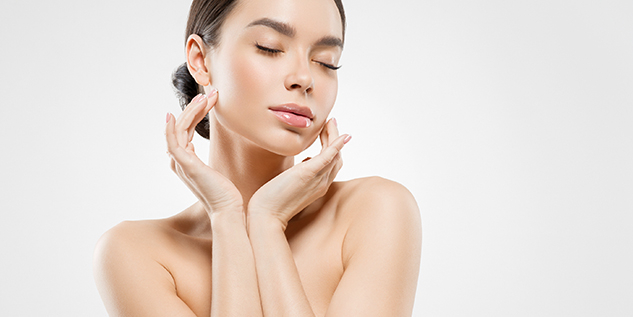
Cilt yaşlanmasıyla mücadele etmek yaşlanma belirtileri ortaya çıktığı andan itibaren zorlaşmaya başlayacaktır.
DETAYLAR

Batık tırnak problemi, hayatı kâbusa çeviren, günlük yaşamı olumsuz etkileyen bir ayak sağlığı sorunudur.
DETAYLAR

Leke, hem kadın hem de erkeklerde görülen en yaygın cilt rahatsızlıklarından biridir. Lekeler, ciltteki melanosit hücrelerinin salgıladığı melanin pigmentinin ciltte birikmesi sonucunda oluşur.
DETAYLAR

Kişinin hayatı boyunca karşılaştığı fiziksel travmalar, geçirilen çeşitli kazalar, ameliyatlar, çeşitli hastalıklar, yanıklar, bazı dermal enfeksiyonlar vücutta yara izi oluşumunun temel nedenleri arasında yer almaktadır.
DETAYLAR

Vücuttaki istenmeyen tüyler, hem kadınlar hem de erkekler için estetik bir sorun olmakla birlikte, sağlık açısından da önemli bir yere sahiptir.
DETAYLAR

Kış mevsiminde en çok nükseden hastalıklardan biri de cilt hastalıkları oluyor. Havaların soğuması, güneş ışınlarının azalması, kapalı mekânlarda ısıtıcı, soba ve klimaların kullanımı nedeniyle cilt kuruyor.
DETAYLAR

Gözaltı ışık dolgusu, yaşlanma, yorgunluk, uyku düzensizliği ve sağlıksız yaşam alışkanlıkları nedeniyle göz altında oluşan göz altı torbaları, morlukları ve göz çevresindeki kırışıklıkların tedavisinde kullanılan bir yöntemdir.
DETAYLAR

Dudak Dolgusu; dudakların dolgunlaşması, hacim kazanması ve daha estetik bir görünüme kavuşması için yapılan uygulamadır.
DETAYLAR

Her gün yapılan makyaj nedeniyle cildimiz zarar görebiliyor. Bu nedenle her gün yatmadan önce yüzdeki makyaj malzemelerinin temizlenmesi gerekiyor.
DETAYLAR
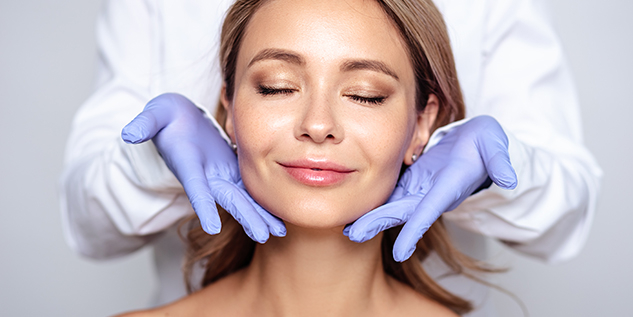
Covid-19 salgınına karşı Çin’den getirilen 3 milyon doz aşının inceleme süreci devam ediyor. Öncelikle sağlık çalışanlarına yapılması planlanan aşı ile ilgili olarak kamuoyunda büyük bir tereddüt yaşanıyor.
DETAYLAR

İnsan bedeni yaşlandıkça ciltte gevşeme, sarkma ve çizgiler oluşur. Bunun en büyük nedeni ise vücudun doğal kolajen üretiminin azalmasıdır.
DETAYLAR

Glutatyon, insanların hastalıklardan korunması ve sağlıklı bir yaşam sürmesi için gerekli olan vücuttaki en önemli moleküllerden biridir.
DETAYLAR

Özellikle ergenlik dönemi olmak üzere vücutta çıkan sivilceler (akne) sosyal hayatı olumsuz yönde etkileyebiliyor.
DETAYLAR

Kolajen Aşısı Nedir? Kolajen aşısı, cilde yeniden elastikiyetini ve parlaklığını kazandırmak, kırışıklıkları gidermek için yapılan medikal bir uygulamadır.
DETAYLAR

Kişiyi olduğundan daha yorgun, bitkin, uykusuz, yaşlı ve sağlıksız gösteren göz altındaki morlukların oluşumunda çeşitli etkenler bulunuyor.
DETAYLAR

Kolajen Nedir? Kolajen, vücudun dış ve iç etkenlere karşı dayanıklılığını artırıp hücrelerin bir arada tutulmasını sağlayan, cilde ve vücuda esneklik veren en önemli proteinlerden biridir.
DETAYLAR

Hayatımızın anlamı, neşe kaynağımız çocuklarımızda bazı besinlere karşı oluşan alerji canımızı çok sıkar. 0-2 yaş arası çocukların yüzde 6’sında görülen ve şiddetli reaksiyonlara neden olabilen bu alerjilere karşı dikkat edilmesi gerekiyor.
DETAYLAR

Ergenlik döneminde en fazla karşılaşılan sorunlardan biri olan akne (sivilce) tedavisiyle ilgili internette pek çok doğal maske tarifi bulunuyor.
DETAYLAR

Yaşın ilerlemesi ve çevresel faktörler nedeniyle cildimiz her geçen gün yaşlanır ve bunun sonucunda sarkma ve kırışıklıklar oluşur.
DETAYLAR

Dermatolog Uzman Dr. Ayşegül Güney, özellikle sıcak havalarda maske kullanımının cilt problemlerine neden olabileceğini, alınacak küçük önlemlerle bu riskin ortadan kaldırılabileceği uyarısında bulundu.
DETAYLAR

Corona virüs salgını nedeniyle maske takmanın zorunlu hale getirilmesi olası cilt hastalığı risklerini de beraberinde getirdi.
DETAYLAR

Mersin’de deri hastalıkları, deri tümörleri, alerjik deri hastalıkları ve kozmetik dermatoloji alanında hizmet veren Dermatolog Uzm. Dr. Ayşegül Güney, sizin için yazın uyku öncesi yapılması gereken cilt bakımını kaleme aldı.
DETAYLAR

0 553 111 85 03



